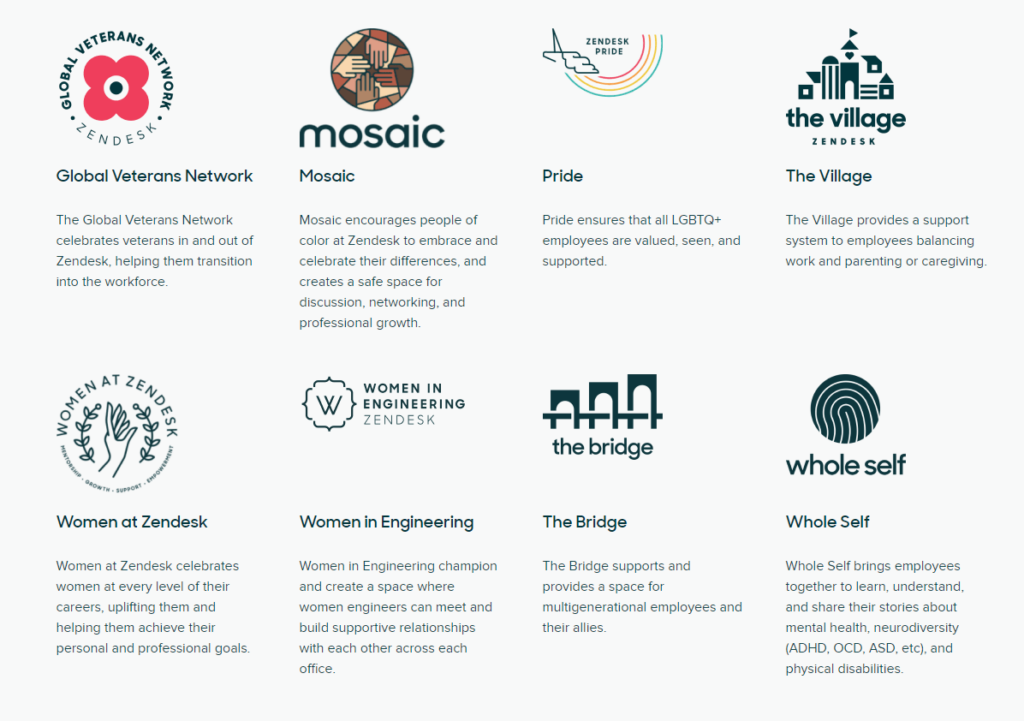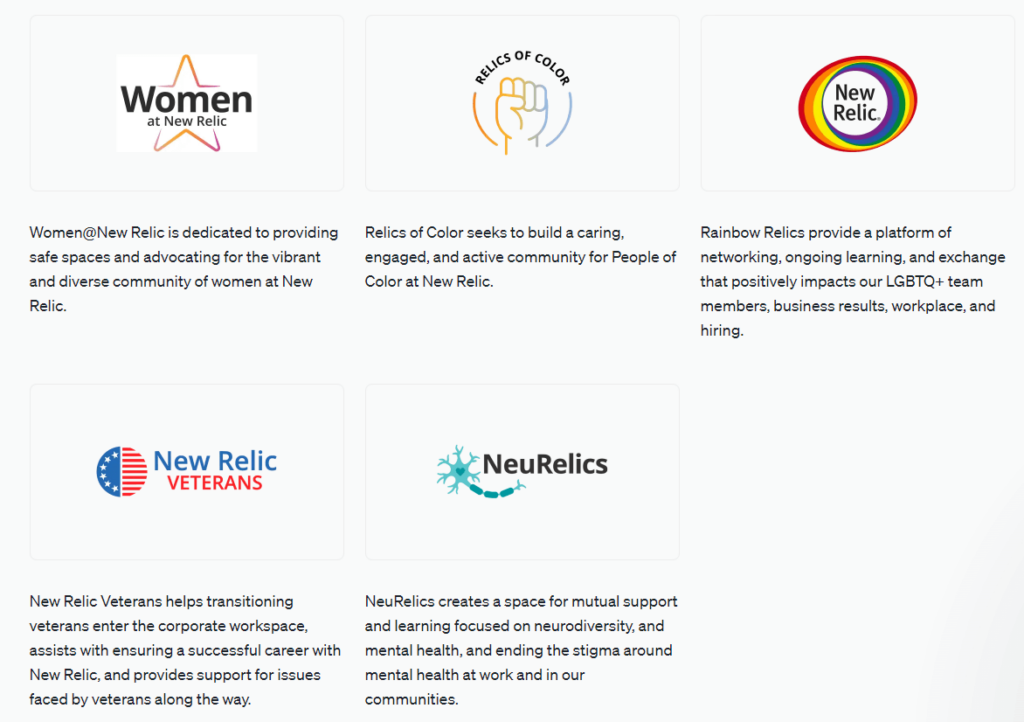In addition to employee wellness platforms, organizations are keen to find other methods of supporting employee's physical and mental well-being.
Whether you call them employee resource groups (ERGs), employee communities, or affinity groups, these organized internal efforts can fuel much-needed organizational change and humanize your workplace.
Here I’ll share what ERGs are, why they're valuable, and how to establish an ERG that can support your DEI goals.
What Is An Employee Resource Group?
Employee Resource Groups are groups of people from the same organization who unify based on a common identity, lived experience, common goals, or intersectional backgrounds and aspirations.
Traditionally, ERG members belong to underrepresented groups such as women, people from ethnic minority backgrounds, those with disabilities, or the LGBTQ community, but they can also form around other commonalities or interests such as working parents or environmental concerns.
Ultimately, the #1 purpose of ERGs for leaders and managers is to better understand employee needs.
Here are a couple of examples of how companies brand their ERGs on their websites.
From Zendesk

From New Relic

Why Are Employee Resource Groups Important?
ERGs can be the access point and connective tissue between people across the organization and the people who are making decisions that impact systemic change.
Potential benefits of ERGs include:
Enhanced diversity and inclusion
ERGs help promote diversity and inclusion in the workplace by providing a platform for underrepresented groups to voice their experiences, concerns, and perspectives, contributing to a more inclusive work environment.
Increased employee engagement
By participating in ERGs, people can feel more engaged and connected to their workplace. This sense of belonging and added purpose can increase employee engagement.
Professional development
ERGs offer networking opportunities, mentorship, and professional development resources. Members can develop leadership skills, expand their professional networks, and gain visibility within the organization.
Improved recruitment and retention
ERGs can assist in attracting a diverse pool of candidates and play a key role in retaining talent by demonstrating the company's commitment to diversity and inclusion.
Cultural awareness and education
These groups educate the broader employee base about different cultures, identities, and experiences, fostering mutual respect and understanding within the organization.
Business insights and innovation
ERGs can provide valuable insights into diverse markets and customer bases, aiding in the development of products and services that cater to a wider range of consumers.
Support and advocacy
They offer support to members, providing a safe space to share experiences and advocate for issues affecting specific groups, thereby influencing company policies and practices.
Enhanced employer brand
ERGs can enhance an organization's reputation as an inclusive and socially responsible employer, which can be attractive to potential employees, customers, and investors.
Improved communication and collaboration
By bringing together employees from across the org, ERGs can improve cross-departmental communication and collaboration. They can also help leadership understand diverse perspectives when making strategic decisions.
Community engagement and social responsibility
Many ERGs engage in community service and social responsibility initiatives, enhancing the company's image in the community and providing employees with opportunities to give back.
Practically, ERG members can also help human resource departments with tasks such as onboarding new hires.
Driving systemic change
Some examples of important and empirical systemic change that can emerge from ERGs are:
- Pay equity and transparency policies
- Equitable recruiting, hiring, and interviewing practices
- Fair parental leave policies
- Trans-affirming healthcare options
- Equitable performance review processes
- Success metrics for inclusive talent mobility
- Diversified customer base
- Quantifiable community presence and impact
- Operationalized employee listening
- A company culture of feedback, mentoring, and growth.
How To Establish An ERG In Your Organization
First, it’s important to remember that ERGs are a people-over-profit approach.
Organizations need to believe that their people are their greatest asset and be willing to invest in them.
Once that’s in place, use this 3 part framework to establish an ERG.

1. Organize
Employee Resource Groups are often completely employee-led, grassroots efforts at the intersection of employee activism and culture.
They take a similar structure to committees, clubs, or task forces. Therefore, to organize one there needs to be:
- Enough interest and someone willing to start the group and establish meeting and behavioral guidelines and goals.
- Some allotment of funds for the group to utilize as needed.
Ideally, whoever establishes the group identifies as having the lived experience that the group is designed to support.
Whether or not the group is fully composed of that identity can be determined by the group once formed.
So, if you’re currently in an all-white organization, you may not be ready to establish Black, AAPI, or Latino ERGs.
Once you have enough interest and members to share the load of responsibilities that come with organizing, you’re ready to create your plan.
2. Plan
Organizing people is one thing, but without priorities, purpose, objectives, vision, or goals, it will be difficult to gain the momentum needed for long-lasting and sustainable change.
So, take some time to identify what this ERG will accomplish long term. Some questions to ask here are:
- Is it solely for participants to heal and build community?
- Is it to raise awareness of important topics across the organization?
- Will you host speaking events, professional development opportunities, or volunteer days?
Identifying the needs not currently being is a good place to start. To help, check out this list of core needs that all people have and brainstorm ways your ERG can address them through systemic change.
Once you’ve identified your needs and priorities, find your stakeholders: executives, HR, and management.
They must be fully briefed that these ERGs exist and what they’re working to achieve, and they should be your advocates and sponsors as well. We’ll refer to them as your executive sponsors.
As DEI is a business decision, once you’ve identified your stakeholders be prepared to articulate your plan to your executive sponsors.
If you need to assemble a business case for your executives, Partners in Diversity in the Pacific Northwest has many data-driven research projects designed to help organizations communicate the importance of DEI initiatives to leaders.
Then, it’s up to your executive sponsor to communicate the needs that emerge from ERG efforts to the appropriate channels. They’re accountable for the information to get in front of the right eyes and into the right hands for execution.
3. Execute
Once you have a plan (I recommend planning about 12 months out), start hosting regular member meetings, assign roles and responsibilities, and launch your first program.
You’ll quickly learn and see what’s working and what’s not.
Eventually, you might be ready to create a newsletter to generate company-wide awareness, draft proposals to effect policy change, and continue focusing on recruiting to grow the ERG’s presence and impact.
As you execute your plan, keep your company’s DEI goals close and ensure your ERG efforts and outcomes align.
Employee Resource Groups Are A Driver Of Positive Change
DEI work cannot be done alone, in a vacuum, or by one VP of Diversity.
Employee resource groups exist to give a voice to the people, build community, learn, have fun, and create understanding about what’s needed to create more equitable and inclusive workplaces.
Key takeaways
- ERGs are a great way for leaders to better understand employee needs and connect people across the organization
- Ideally, whoever establishes the group identifies as having the lived experience that the group is designed to support
- ERGs should be established with clear priorities, purpose, objectives, vision, and goals.
For more on establishing ERGs and DEI work in general, find me in the People Managing People Community, a supportive community of HR and business leaders sharing knowledge to help you progress in your career and make greater impact in your org.


